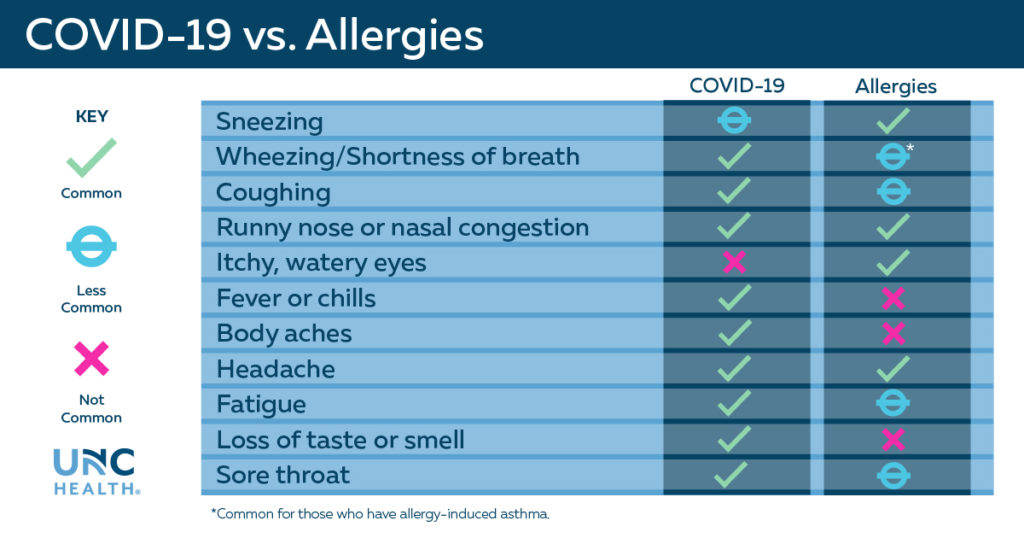Editor’s note: This article originally ran September 22, 2021, and was updated September 8, 2024.
Along with trees bursting with colorful leaves, pumpkin spice and cooler temperatures, one of the hallmarks of fall is seasonal allergies brought on by ragweed, commonly called “hay fever.”
Fall allergies can cause weeks or months of misery, usually starting in September and lasting until the first frost. And once again this year, fall allergies coincide with a rise in cases of COVID-19.
UNC Health allergist Edwin Kim, MD, offers clues to what might be causing your sniffles.
How to Tell the Difference Between Fall Allergies and COVID-19
Fall allergies can cause symptoms similar to those of COVID-19. Of course, allergies are not contagious, and COVID-19 definitely is. Here’s how to tell the difference.

“Allergies, COVID-19 and viral infections can cause significant runny nose, congestion, eye irritation and even some cough,” Dr. Kim says. “So on the surface, they’ll look very similar. One very clear difference is going to be fever. Allergies should not cause any type of temperature at all.”
Dr. Kim offers this guideline: If you have a fever of 100 degrees or higher, that’s an infection, not allergies. Also, allergies are long-lasting, as long as pollen is in the air, while COVID-19 and other infections are more acute. If you have cold symptoms that get better in a few days, that’s likely to be an infection and not allergies.
Of course, you can’t wait around to see how long the symptoms last. If you or your child have new cold or COVID-like symptoms, take a COVID-19 test and take steps to minimize the spread of disease to others. If you don’t have COVID-19 and your symptoms persist without improving over a week or so, you might be dealing with seasonal allergies.
Treatment Options for Fall Allergies
If you suffer from weed pollen allergies, your symptoms will last throughout fall if left untreated. Here are some tips for allergy relief:
- Take over-the-counter allergy medications, such as Zyrtec, Claritin, Allegra or their generic equivalents.
- If you feel drainage from your nose down the back of your throat (postnasal drip), use Flonase, an over-the-counter nasal spray.
- Limit exposure to allergens. For example, keep your windows closed and shower after spending time outside, if possible.
If your symptoms persist, talk to your doctor or see an allergist.
Dealing with allergies? Talk to your doctor or find one near you.

